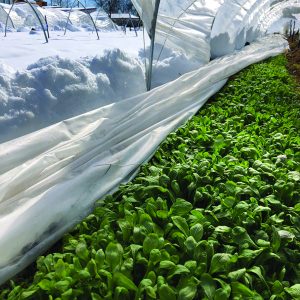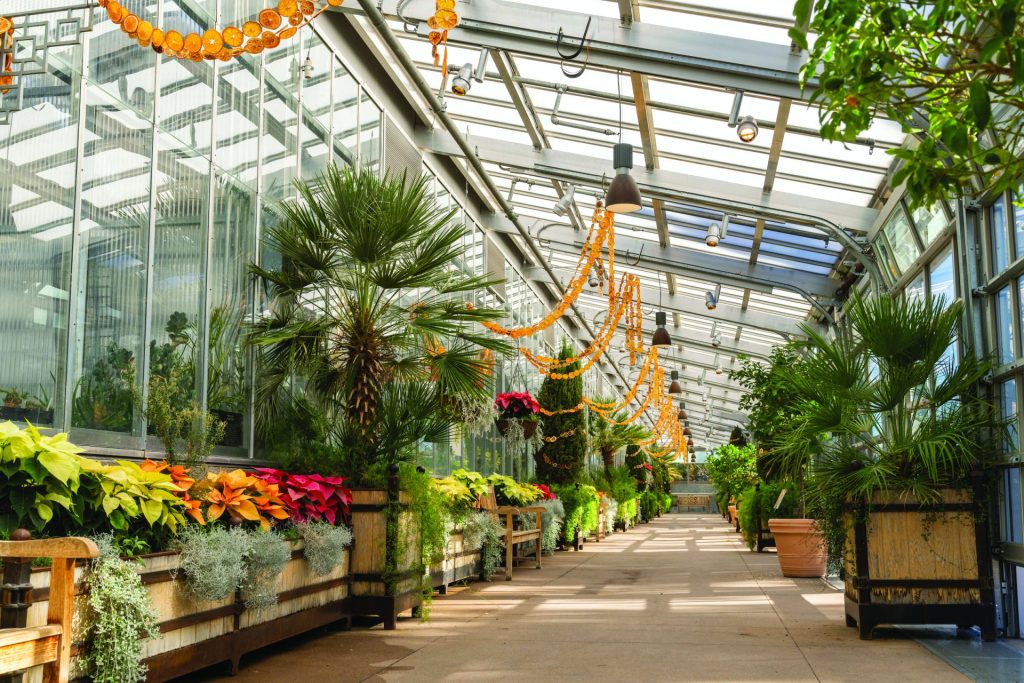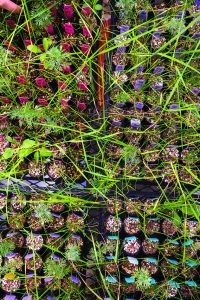Sheltered Sanctuary
13 Sep 2022
Using high tunnels and greenhouses for cool-season growing
By Sara Bruskin
For many gardeners, the growing season is winding down. They’re pulling in the last of their harvests and getting ready to cover their beds in a deep layer of mulch for winter.
It doesn’t have to end there.
If you’ve been thinking about investing in a protective structure to extend your growing season, now is the time (unless you really want to assemble one when it’s 10 degrees outside). The type of greenhouse setup you’ll need depends on your budget, what you want to grow at what time of year, whether you want passive or active climate control and other factors.
High Tunnels and Mild Protection
Some crops can survive harsh Colorado winters under a simple tunnel of plastic sheeting (ideally, greenhouse-grade polyethylene) draped over sturdy hoops. Small versions of these structures called low tunnels are just big enough to contain plants and allow room for growth, while larger versions known as high tunnels or hoop houses are big enough for people to get inside to tend the plants. Some are a good deal taller, encasing more air to further insulate the plants. The bigger a high tunnel is, the warmer it will stay.

Colorado gets bright, sunny days even when there’s snow on the ground. Opening a high tunnel during the day allows for air circulation and ensures cold-season crops don’t get too warm under intense sunlight. [Photo courtesy of Wild Wellspring Farm]
Boulder farmer Krisan Christensen of Wild Wellspring Farm uses both high and low tunnels for her winter CSA, which offers produce from November through March. While farming through the winter without using expensive greenhouses or heating systems is cost-effective, it does limit the crops she can grow to those that can survive freezing, such as kale, collard greens, chard, lettuce and arugula.
Christensen plants those seeds around mid-September, giving the plants a couple of months to mature before Colorado hits the Persephone Period—the time of year when we get less than 10 hours of sunlight each day. During this time, plants don’t get enough rays to do much growing, so the crops need to be nearly at their peak.
“Winter farming is more like storing vegetables in the ground in winter,” she says. “They’re almost at their maturity before we enter winter, so we’re just letting them sit, protecting them from the extreme cold and harvesting them later on.”
Christensen says it’s often necessary to open grow tunnels during the day to cool them down. “We have so much sun that it gets like a sauna in there, which those plants don’t want. They want the cold. They taste better, and they thrive in the cold.”

Greenhouses and Climate Control
To grow plants that aren’t adapted to winter temperatures, you need a more robust structure. Heavy-duty greenhouses are often made with double-pane glass, but Colorado’s glass-shattering hailstorms make polycarbonate glazing a more sensible choice. The synthetic resin panels come in different sizes, with thicker products offering more insulation (and higher cost).
Depending on what you’re growing, a sturdy greenhouse alone may be adequate protection from the cold, but added climate control gives you more crop options and makes a greenhouse suitable for winter seed starting. Brooke Palmer, the greenhouse production coordinator at Denver Botanic Gardens, has heating and air conditioning in her setup, which allows her to customize the environment according to her plants’ needs.

Seedlings at the Denver Botanic Gardens get their start in the propagation greenhouse, which is kept at 73 to 75 degrees to facilitate germination.
Seedlings at the Denver Botanic Gardens get their start in the propagation greenhouse, which is kept at 73 to 75 degrees to facilitate germination. [Photo by Scott Dressel-Martin, courtesy of Denver Botanic Gardens]
“I usually keep the greenhouse for seedlings and cuttings around seventy-three to seventy-five degrees,” she says. With climate control, she can start seeds for cool-season veggies like onions, broccoli, kale and cabbage in January. Around Valentine’s Day, she starts warmer-season veggies that benefit from a long growing season, like peppers, eggplants and tomatillos, with tomatoes following in late February.
To get active growth from seedlings during the Persephone Period, grow lights are a necessity. Many people set their grow lights to run for 18 to 20 hours a day—much longer than daylight hours even at the peak of summer. This encourages rapid, bushy growth in plants rather than sluggish, leggy growth habits resulting from low-light conditions.
“There is also something we do where we turn the lights on in the middle of the night for four or five hours to kind of trick the plants into thinking they’re growing for an extra day, so it speeds up the process,” Palmer says. “It’s kind of weird, but it works really well.”
A setup with full climate control and lighting is more expensive to buy and operate, but you’ll have far more growing options. You can also use climate control to get plants used to semi-outdoor conditions before they move outdoors, so you won’t have to spend as much time schlepping them outside and back inside to harden them off in the spring.
Resources
For detailed comparisons of different greenhouse styles, check out Ceres Greenhouse Solutions’ blog at ceresgs.com/blog.
Mikl Brawner of Harlequin’s Gardens, who has been researching and building low-tech greenhouses for two decades, will teach a class on the subject—including a tour of the nursery’s five greenhouse designs—on Sept. 18 at 1 p.m. at 4795 N. 26th St., Boulder. Register at harlequinsgardens.com.












